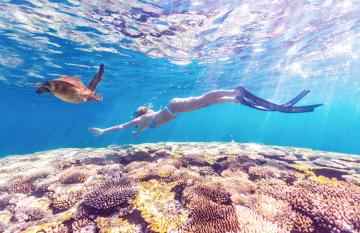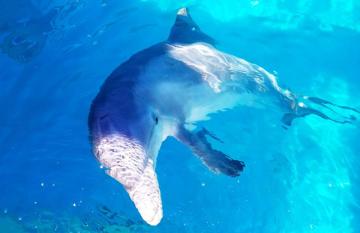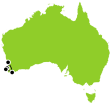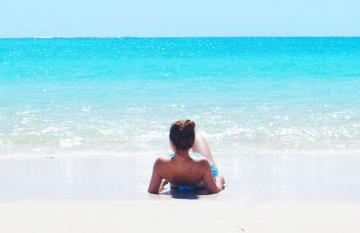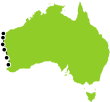
Superlatives, Superlatives and more Superlatives! Yes, we all know the Great Barrier Reef has nice diving, however, it’s certainly not the be all and end all of the diving in Australia. Let's face it unless you get right out to the actual outer reef you can't help comparing the diving to places like Egypt’s “Red Sea” or Fiji’s coral coast and there are at least half a dozen other well-known diving locations with similar diving.
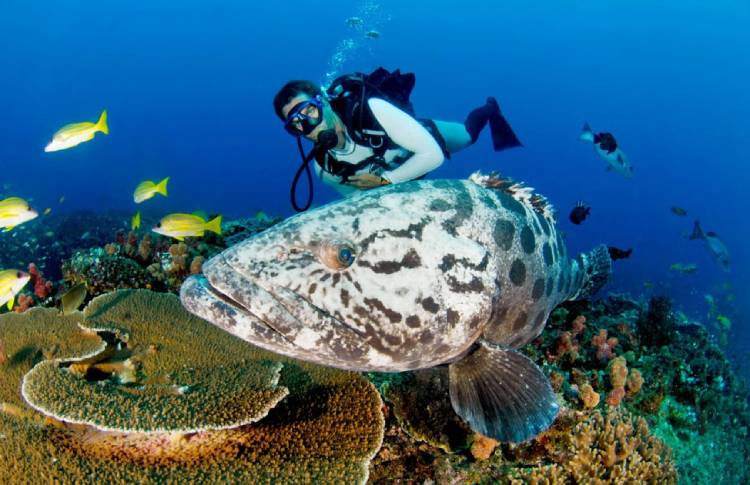
Contents
- Fish Rock at South West Rocks
- Diving the SS Yongala in Queensland
- Tasmania’s Cathedral Cave
- Diving Julian Rocks Marine Park in Byron Bay
- Diving the HMAS Swan in Perth
- Diving Coffs Harbour / Solitary Islands New South Wales
- Rodney Fox Great White Cage Diving South Australia
- Dive the HMAS Brisbane on Queensland's Sunshine Coast
- Diving Busselton Jetty in Western Australia
- Diving Rottnest Island in Western Australia
So here you go, a selection of 10 unique Australian dive sites, that may inspire you to think differently when planning diving Australia rather than just focusing on Diving Australias Great Barrier Reef.
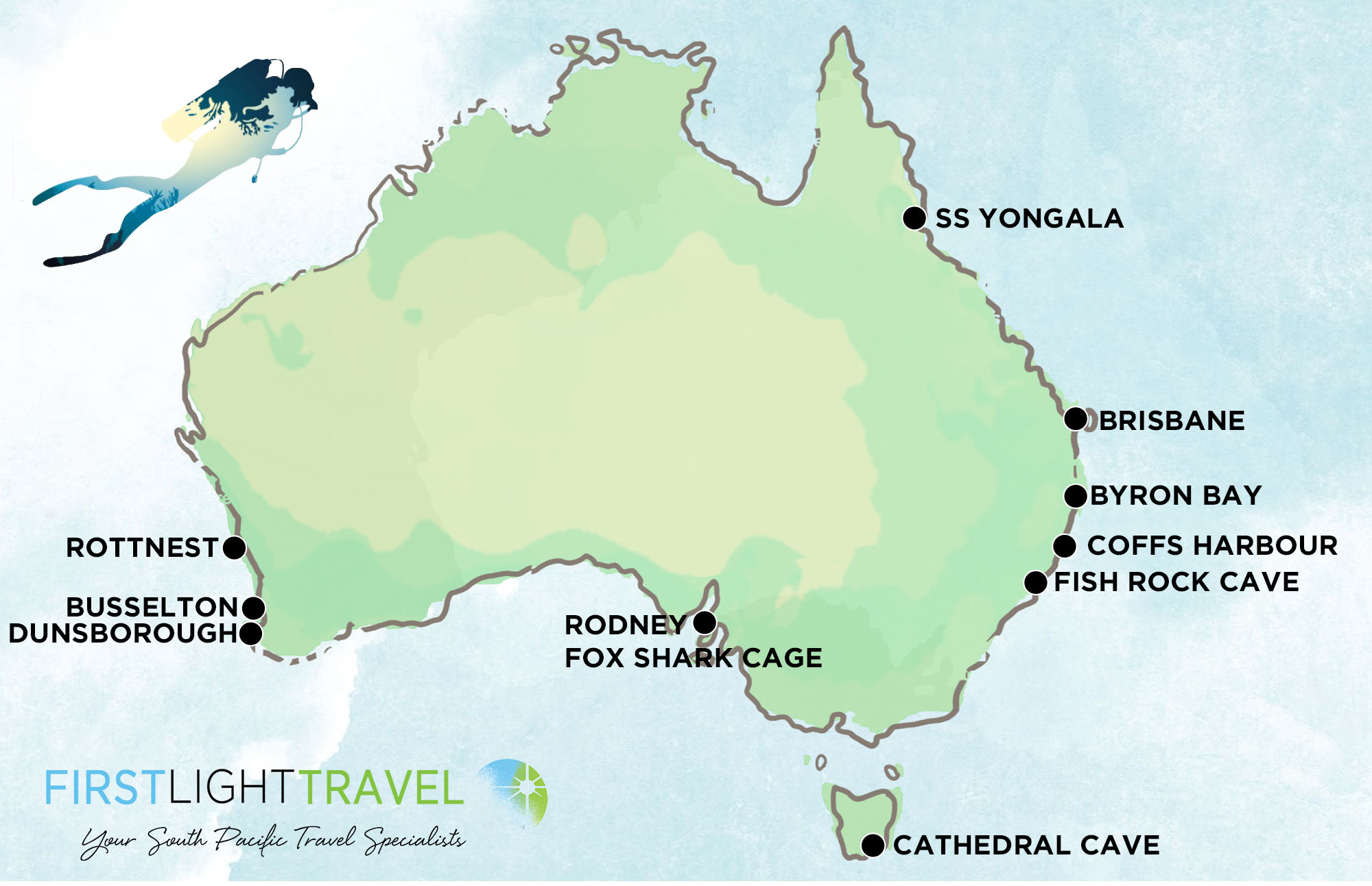
Fish Rock at South West Rocks
Australia's best ocean cave dive, and voted among the top dive sites in Australia, Fish Rock is situated just two kilometres from Smoky Cape at the South West Rocks on the New South Wales. The thrill of entering a 125 metre (410 ft.) long cave and moving right through the centre of a small island is a dive not to be missed. As well as the cave itself, Fish Rock is home to a large array of marine life, hence how the island came to be named. Importantly both Fish Rock and Green Island are critical habitat areas for Grey Nurse sharks that live here in large numbers all year. Created by a fault in the island, Fish Rock Cave runs from the deeper seaward entrance at 24 metres (78 ft.), 125 metres (410 ft.) through the rock emerging into the fish-filled, silhouetted shallower entrance fringed by gorgonian corals (pink) at 12 metres (39 ft.). Fish Rock has a completely unique ecosystem. The temperature inside the cave is one degree warmer than the surrounding ocean and the water always clear. A regular strong current brings the nutrients to the area attracting the fish life. It is easy to plan your dive to minimize or take advantage of the current (drift dive).

Diving the SS Yongala in Queensland
In 1911 the coastal steamship SS Yongala sunk in a cyclone 90km (55 miles) south-east of Townsville near Cape Bowling Green in Queensland, with the loss of all 121 soles. Now home to one of the world’s greatest dive sites. Resting on sand this 110m (360 ft.) wreck lies in 15-30m (50 to 100 ft.) of water and attracts a vast variety of marine life. Descend and witness what makes this location so famous. Eagle rays, turtles, sea snakes, queenfish, cobia, giant groupers, batfish and large schools of trevally are just a few of the things you will see. There is also a huge diversity of soft and hard corals on the skeleton of the SS Yongala. During the winter you may even hear the calls of the migrating whales. This dive is definitely a dive that showcases the fish species in the Australian Coral Sea. Due to strong currents, this dive is only suitable for advanced divers.
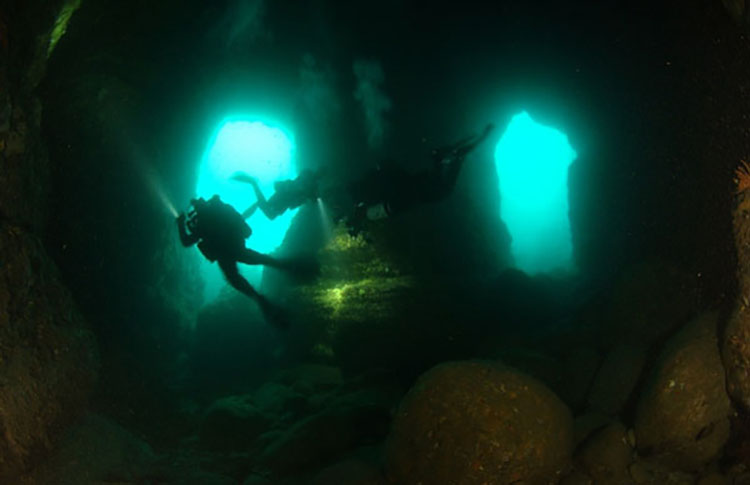
Tasmania’s Cathedral Cave
Tasmania's Waterful Bay is an area well known for its large sea caves; the largest, Cathedral Cave, consists of a massive entrance (maximum water depth 21m (68 ft.), extending back into various smaller caverns with narrow tunnels and cross passages, often with large schools of fish hanging near the entrances. The walls are brightly covered with invertebrates, typical of temperate waters and as you can imagine offers photographers spectacular photo opportunities. There are other smaller cave complexes, plus the large canyons of the Patersons Arch area that offer varied invertebrate life with great swim-throughs and walls but without the rock ceiling. These caves are for experienced divers with good buoyancy control.
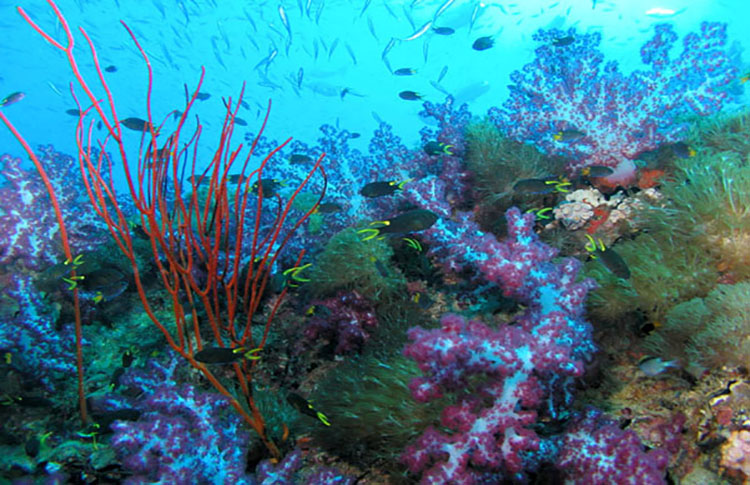
Diving Julian Rocks Marine Park Byron Bay
Just 2.5 kilometers (1.5 miles) from Byron Bay is one of Australia's most popular travel diving destinations, the Julian Rocks Marine Park and is rated as one of the top ten scuba locations in Australia. The meeting and therefore mixing of tropical warm waters with the cooler temperate waters make diving around Byron Bay very unique. Named by Captain James Cook in 1776, Julian Rocks consists of ancient metamorphic rock thrust through the earth’s crust millions of years ago. The rocks are an extension of Cape Byron, separated by the ocean forming a unique habitat providing food and shelter for rays, sea turtles and corals. With over 600 recorded species of tropical, temperate and pelagic fish including whale, manta ray, dolphin, leopard shark, the endangered grey nurse and at least three species of turtle are all common visitors to the rocks. All the action is just 10 minutes from Byron Bays main beach.
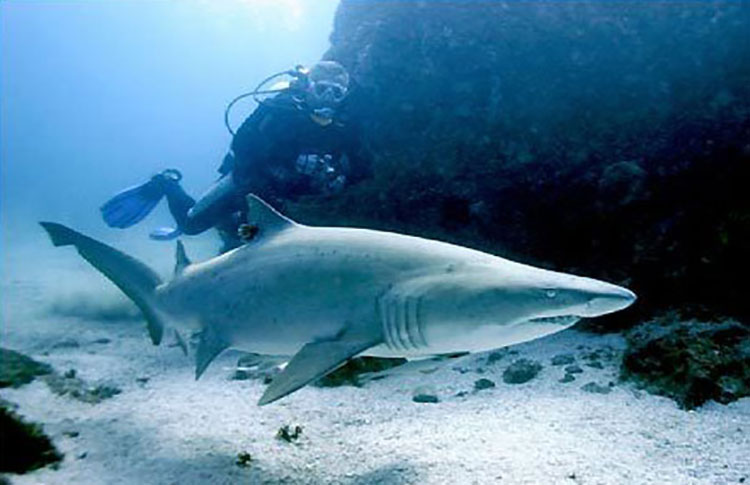
Diving the HMAS Swan in Perth
Dunsborough in Western Australia hosts one of the largest accessible dive wrecks in the Southern Hemisphere, the HMAS Swan. This 113 metres (370 ft.) long and decommissioned naval destroyer was scuttled in Geographe Bay just off Dunsborough in 1997 and now has become one of the most popular wreck dives in Australia. Sitting in 35 metres (114 ft.) of water and on a slight list, the HMAS Swan is truly a spectacular site, all kinds of fish and marine animals have made the wreck their home. Schools of bull's eye fish hang around in many of the ship’s rooms, while brim and King George whiting patrol the hull. Samson fish, sweep and the blue devil are commonly seen. The wreck is only a 15-minute boat ride out to sea from Meelup Beach. Dunsborough is a three-hour drive south of Perth.
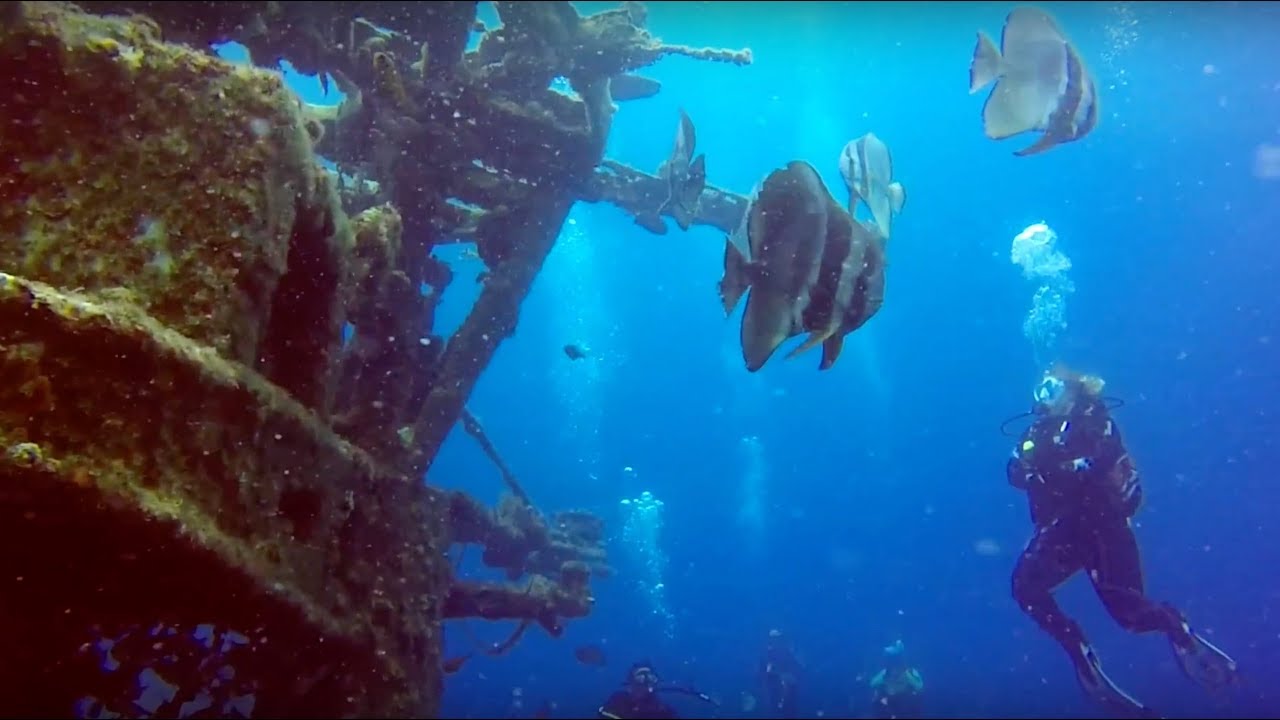
Diving Coffs Harbour / Solitary Islands New South Wales
Blessed with a wonderfully diverse marine life, Coffs Harbour has fantastic diving for those wanting to make the effort. This is also the only place in Australia where the Great Dividing Range meets the vast Pacific Ocean. One of the best sites is the Solitary Islands, located just south of the Great Barrier Reef. The Solitary Islands comprise of five islands, three pinnacles, and several shallow water reefs. Underwater the Solitary Islands terrain is made up of an exciting surfeit of gutters, valleys, boulders, kelp forests, and caves that are frequented by manta rays, giant cuttlefishes, Leopard sharks, Grey Nurse, and White-tip Reef sharks - not to forget turtles, boxer crabs, and many other interesting sea animals.
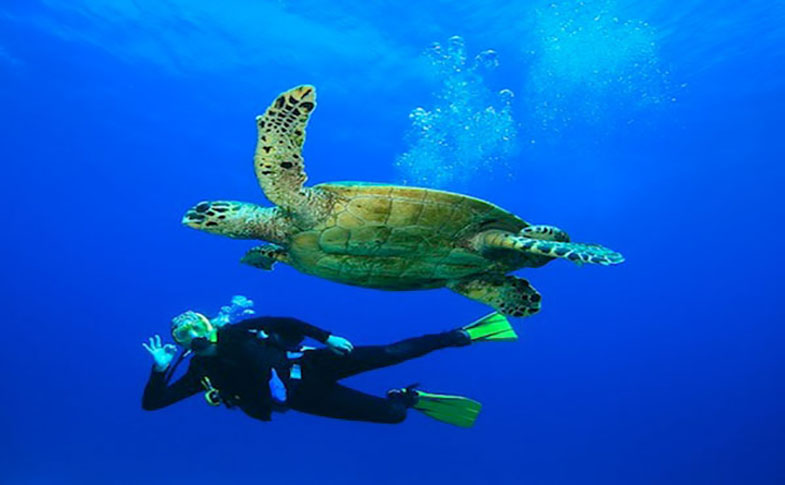
Rodney Fox Great White Cage Diving South Australia
Pioneering shark cage diving 40-years ago, Rodney Fox has been at the forefront of human interaction with Great White Sharks ever since. As advocates for the Great White, their expeditions have educated the public and attracted adventurers from over the world. Aboard the "Princess II" tours depart Port Lincoln in South Australia to the famous Neptune Islands, which is the very best place in the world to see and photograph the Great White. Fox is the only operator in the world to cater to qualified SCUBA divers in their special submersible cages. Descend to 18m (60ft) to the bottom and enjoy some awesome shark viewing opportunities, as well as being surrounded by other local sea-life, including the worlds largest stingray, southern eagle ray and giant blue wrasse. Non-certified divers can participate in our regular surface cage dives. There are both 3 and 4-night expeditions available.
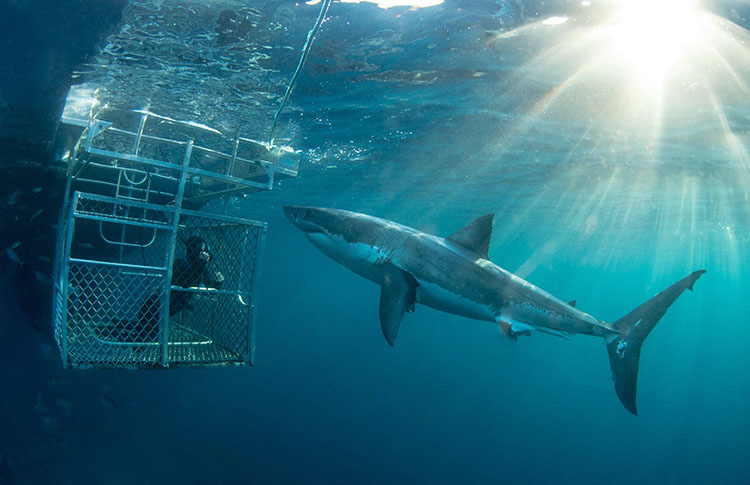
Dive the HMAS Brisbane on Queensland's Sunshine Coast
Scuttled in 2005 of Queensland's Sunshine coast the former destroyer, ex HMAS Brisbane has become an artificial reef and is attracting a growing number of divers from around the world. Being on a sandy floor in 27 metres (88 ft.) of water, sitting bolt upright the HMAS Brisbane has 12 to 15 metres (39 to 49 ft.) of water over her front decks and 18 metres (59 ft.) over her stern. Consistent water clarity and minimal swell make for comfortable diving. A school of predatory yellow tailed kingfish ‘buzz’ the schools of baitfish that surround the wreck. Local well-known inhabitants include a large bull ray, lionfish, angler fish, blennies, nudibranchs, squid sea hares, and schools of juvenile snapper. Other visitors do include greasy cod and eagle rays and a shoveled nose ray.
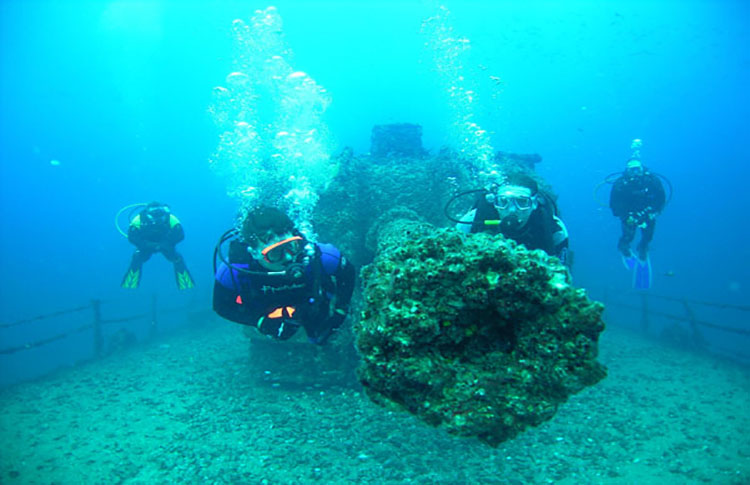
Diving Busselton Jetty in Western Australia
Busselton Jetty is the longest timber-piled jetty in the Southern Hemisphere and stretches 1.8 kilometres (1.1 miles) across Geographe Bay in W.A. The warmer waters of the Leeuwin current create the perfect environment for the abundance of colourful tropical and sub-tropical marine life. Often described as Australia's greatest artificial reef, Busselton Jetty is rated as one of the top ten dives in the country. There's an incredible forest of colored corals, beautiful sponges, many fish and colourful invertebrates sheltering beneath the old karri timber supports, making it suitable for both novices and experienced divers. Warm currents, shade and the protection offered by the jetty structure has resulted in more than 300 species of fish and coral being recorded. You're likely to see many schools of old wives, yellowfin and bullseyes, tiny porcupine and pineapple fish as well as rays, cuttlefish octopi all hidden amongst the old timbers.

Diving Rottnest Island in Western Australia
The diversity of fish, coral species and shipwrecks in the waters around Rottnest Island make it one of the most fascinating dive sites to be found in such close proximity to a capital city (Perth). With over 370 species of fish, around 12 shipwrecks and numerous reefs and coral, diving around Rottnest Island is worthwhile. Rottnest Island attracts tourists from all over the world to dive the picturesque waters. The island consists of mainly limestone reefs with a combination of temperate and tropical species of fish, making it a great location to see many different varieties. Some closeby cavern diving add to the variety. Visibility is usually good in the area and better still it's just a short ferry ride from Perth.
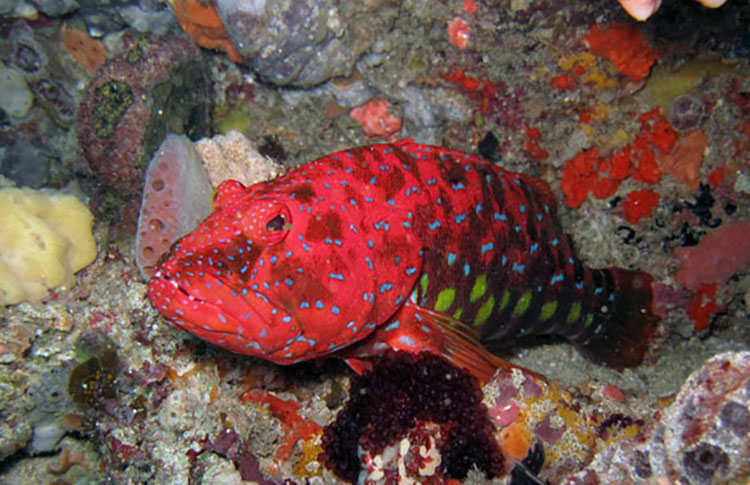
Feeling inspired to book your diving getaway? View our most popular Australian Beach Holidays Self Drive Holidays
At First Light Travel we can plan the perfect self-drive holiday for you. To get started and find ideas you can view our most popular itineraries - just remember that all of our trips are fully customisable.
Updated 2nd January 2019 by Brent
Recent Posts
Blog Categories
Blog archives
- March 2025 (1)
- November 2024 (1)
- October 2024 (1)
- September 2024 (8)
- June 2024 (4)
- May 2024 (2)
- April 2024 (2)
- March 2024 (13)
- February 2024 (3)
- January 2024 (5)
- December 2023 (6)
- November 2023 (4)
- October 2023 (11)
- September 2023 (2)
- August 2023 (6)
- July 2023 (2)
- June 2023 (17)
- May 2023 (3)
- April 2023 (5)
- March 2023 (8)
- February 2023 (9)
- January 2023 (12)
- December 2022 (9)
- November 2022 (12)
- October 2022 (12)
- September 2022 (12)
- August 2022 (6)
- July 2022 (9)
- June 2022 (7)
- May 2022 (3)
- April 2022 (4)
- March 2022 (6)
- February 2022 (1)
- January 2022 (4)
- December 2021 (2)
- November 2021 (3)
- October 2021 (1)
- September 2021 (4)
- August 2021 (10)
- July 2021 (13)
- June 2021 (6)
- April 2021 (2)
- March 2021 (2)
- February 2021 (1)
- January 2021 (1)
- December 2020 (2)
- November 2020 (3)
- October 2020 (2)
- September 2020 (1)
- August 2020 (1)
- July 2020 (1)
- June 2020 (1)
- May 2020 (1)
- March 2020 (1)
- February 2020 (2)
- January 2020 (4)
- December 2019 (2)
- November 2019 (1)
- October 2019 (1)
- September 2019 (5)
- August 2019 (1)
- July 2019 (5)
- June 2019 (1)
- May 2019 (1)
- April 2019 (1)
- March 2019 (1)
- February 2019 (1)
- January 2019 (1)
- December 2018 (1)
- October 2018 (1)
- May 2018 (1)
- February 2018 (1)
- December 2017 (1)
- October 2017 (1)
- June 2017 (1)
- May 2017 (1)
- February 2017 (1)
- January 2017 (1)
- September 2016 (1)
- August 2016 (2)
- July 2016 (1)
- June 2016 (1)
- May 2016 (1)
- April 2016 (1)
- December 2015 (1)





